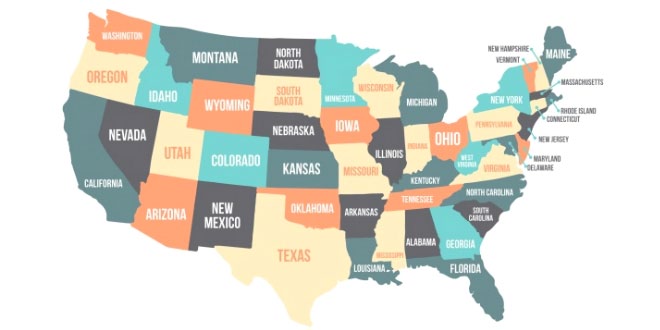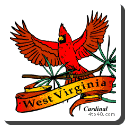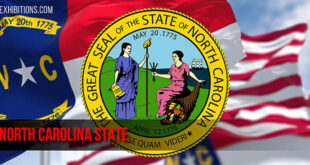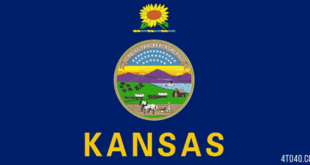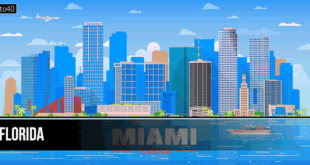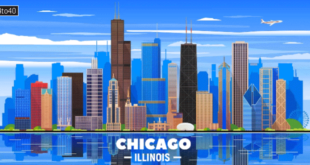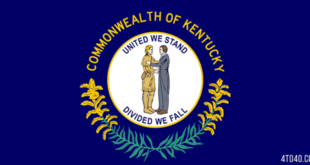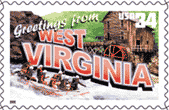 West Virginia State’s population in 1970 (1,744,237) equaled that of 40 years earlier. During the 1970s, however, revived interest in the state’s primary resource, coal, drew many new residents to the state (205,407 between 1970 and 1980) and increased the population by 11.8%. By 1990, however, the population had declined sharply to 1,793,477.
West Virginia State’s population in 1970 (1,744,237) equaled that of 40 years earlier. During the 1970s, however, revived interest in the state’s primary resource, coal, drew many new residents to the state (205,407 between 1970 and 1980) and increased the population by 11.8%. By 1990, however, the population had declined sharply to 1,793,477.
West Virginia State: Land & Resources
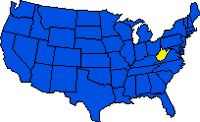 West Virginia lies within three physiographic provinces. At Harpers Ferry a scenic and strategic pass of the Potomac provides a gateway through the BLUE RIDGE MOUNTAINS. To the west the Ridge and Valley region occupies most of the eastern panhandle. A prominent east-facing escarpment, the Allegheny Front of the ALLEGHENY MOUNTAINS, marks the beginning of the Appalachian Plateau, which covers three-fifths of the state. The highest elevations in West Virginia–Spruce Knob (1,483 m/4,865 ft), Bald Knob (1,476 m/4,842 ft), and Big Spruce Knob (1,418 m/4,652 ft)–are found along the eastern edge of the plateau.
West Virginia lies within three physiographic provinces. At Harpers Ferry a scenic and strategic pass of the Potomac provides a gateway through the BLUE RIDGE MOUNTAINS. To the west the Ridge and Valley region occupies most of the eastern panhandle. A prominent east-facing escarpment, the Allegheny Front of the ALLEGHENY MOUNTAINS, marks the beginning of the Appalachian Plateau, which covers three-fifths of the state. The highest elevations in West Virginia–Spruce Knob (1,483 m/4,865 ft), Bald Knob (1,476 m/4,842 ft), and Big Spruce Knob (1,418 m/4,652 ft)–are found along the eastern edge of the plateau.
Climate
With a mid-latitude continental climate, featuring cyclonic storms in winter and thunderstorms in summer, West Virginia State receives about 100 mm (4 in) of rain each month. Greater amounts occur at higher elevations, but downwind or eastward of mountains precipitation drops to as low as 810 mm (32 in) a year in parts of Pendleton County. Temperatures range from January’s average of 1 deg C (34 deg F) to July’s 22 deg C (72 deg F).
The many steep, narrow valleys make flash flooding West Virginia’s most feared weather-related phenomenon. In 1972 the Buffalo Creek Flood killed 125 people after a mine refuse pile collapsed, blocking normal drainage.
Historical Sites
HARPERS FERRY was the scene of the famous raid (1859) by John BROWN that foreshadowed the violence of the Civil War. Near Harpers Ferry, across the Potomac River in Maryland, is a national historical monument, the CHESAPEAKE AND OHIO CANAL. At the other end of the state, downstream from Parkersburg, Harman BLENNERHASSET built a mansion (c.1800) on an island in the Ohio that still retains his name. There, Aaron Burr, with Blennerhasset’s unwitting assistance, set about to establish an empire in the southwest.
Tourism
West Virginia’s 35 state parks receive more than 6.5 million visitors a year. The Monongahela and other national forests encompass approximately 7,500 sq km (2,900 sq mi). In Wheeling the municipal Olgebay Park draws guests from Ohio and Pennsylvania as well as from West Virginia.
West Virginia State: History
The earliest inhabitants of what is now West Virginia used campsites subsequently buried in the alluvial deposits of the Ohio and Kanawha rivers. They left behind small piles of shells near their villages. The MOUND BUILDERS of the Adena culture, who occupied the region 2,000-3,000 years ago, fashioned hundreds of burial mounds, one of the largest of which, Grave Creek Mound, is at Moundsville, in the northern panhandle. Inside the mounds copper bracelets from the Great Lakes, volcanic glass beads from the Rocky Mountains, and shells from the Gulf of Mexico attest to prehistoric trading across the entire expanse of North America.
European Settlement
By 1669, when the German-born explorer John Lederer crested the Blue Ridge, the Mound Builders had long since disappeared and the CHEROKEE, DELAWARE, SHAWNEE, and SUSQUEHANNA roamed the area looking for game. West Virginia remained unsettled until the power of the Indians was broken about 1726, when Morgan Morgan, a Welsh immigrant journeyed south through the Ridge and Valley region from Pennsylvania and erected a cabin at Bunker Hill, south of Martinsburg. Soon (c.1727), a band of German pioneers established New Mecklenburg (now Shepherdstown) on the right bank of the Potomac, south of Hagerstown, Md. More pioneers–Scottish, Irish, and German–arrived from Pennsylvania, settling first in the eastern panhandle, in the Greenbrier valley, and then along the Ohio at such sites as Wheeling (1769), Point Pleasant (1774), and Parkersburg (1785). Charleston, upstream on the Kanawha River, was founded in 1788.
The American Revolution
The wave of new settlers arriving on the Appalachian Plateau felt threatened by the French, lodged at FORT DUQUESNE (site of present-day Pittsburgh, Pa.). But after the British had won the last of the FRENCH AND INDIAN WARS in 1763, King George III, fearing further trouble from the Indians, forbade any settlement west of the Allegheny Mountains. Ignoring the king’s proclamation, no fewer then 30,000 pioneers occupied the land between the Alleghenies and the Ohio by 1775. Indian power was ended by the retreat of the Shawnee from Point Pleasant in 1774. In 1782, the year after the British surrender at Yorktown supposedly ended the Revolution, British troops and Indians raided Fort Henry at Wheeling.
The Civil War and Separation
As early as 1776, the settlers of western Virginia had petitioned the second Continental Congress in Philadelphia for a separate government. It became increasingly clear during the early 1800s that, whereas eastern Virginia shared the social and economic interests of the South, the western part of the state–because of both geography and ethnic heritage–had more in common with the North (especially western Pennsylvania) and the West.
On Apr. 12, 1861, Confederate troops fired on Fort Sumter; 5 days later, at a state convention in Richmond, Virginians had to decide whether to join the CIVIL WAR on the side of the Confederacy or the Union. A majority voted for an ordinance of secession, but delegates from the northwestern part of the state returned home and set up their own convention at Wheeling on June 11.
Declaring the government at Richmond void, the Wheeling convention established a “restored” government of Virginia and appointed Francis H. PIERPONT governor. In a public referendum on Oct. 24, 1861, voters overwhelmingly supported creation of a new state, Kanawha.
The next month a second convention met at Wheeling, changed the name of the state to West Virginia, and began to draft a constitution. Voters approved the new constitution in April 1862, and a year later President Abraham Lincoln proclaimed West Virginia a state, to be admitted to the Union 60 days later, on June 20, 1863.
Industrialization and Labor Strife
John Peter Salley had discovered coal near Racine as early as 1742, and in 1794 at King’s Creek in the northern panhandle Peter Tarr constructed the first iron furnace west of the Alleghenies. Industrialization on a large scale, however, did not begin until after the Civil War, when outside capital opened up coal mines, drilled petroleum and gas wells, and built railroads and factories. Organizers from the United Mine Workers of America (UMW) came to West Virginia in 1890. On Dec. 6, 1907, the worst mining disaster in U.S. history left 361 dead at Monongah.
Frequent strikes and lockouts, particularly in 1912-13 and 1920-21, led to violent battles between miners on the one hand and company guards, local police, state militia, and federal troops on the other. Turmoil continued into the 1940s, when the UMW took the miners out on strike at the height of World War II. During the 1970s, wildcat strikes plagued the coalfields as union men defied their leadership. Recently, renewed interest in coal for electric power generation, and for coal gasification has aroused national attention, and West Virginia’s economic future again appears promising if labor-management cooperation can be realized.
West Virginia State: Land
- Area: 62,759 sq km (24,231 sq mi); rank: 41st.
- Capital and largest city: Charleston (1990 pop., 57,287).
- Counties: 55.
- Elevations: highest–1,483 m (4,865 ft), at Spruce Knob; lowest–73 m (240 ft), at the Potomac River.
 Kids Portal For Parents India Kids Network
Kids Portal For Parents India Kids Network
